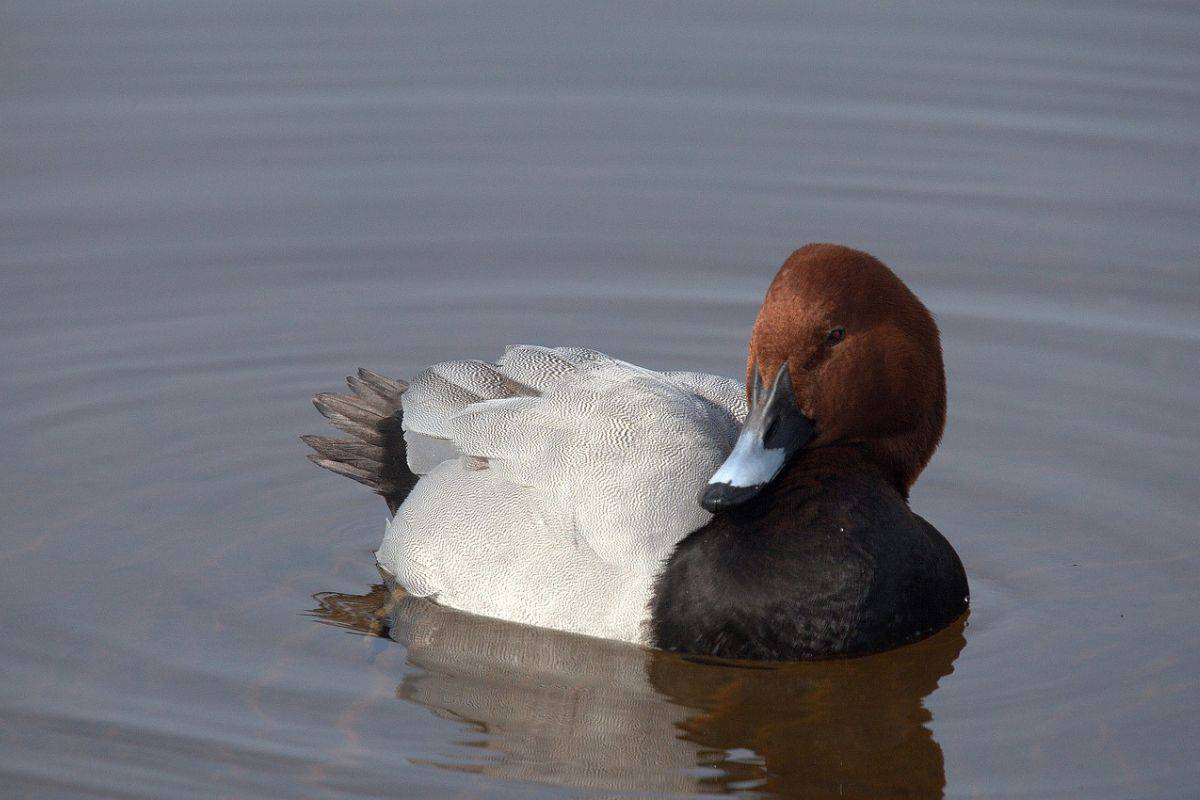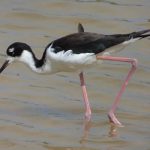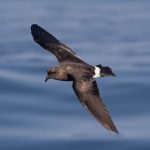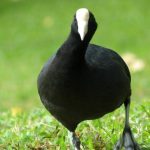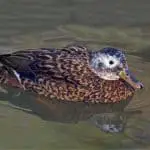Common Name: Common Pochard
Scientific Name: Aythya ferina| Size | Diet | Range in Hawaii | Status in Hawaii |
|---|---|---|---|
| 17 in. - 21 in. | insects, crustaceans, and mollusks | Unknown | Vulnerable |
The Common Pochard, also known as Aythya ferina, is a medium-sized diving duck that is native to Europe and Asia. With its striking redhead and distinctive black and white plumage, the Common Pochard is a beautiful and fascinating bird to observe.
While it is most commonly found in its native range, it has also been known to visit more southern areas during the winter months. Interestingly, the Common Pochard has also been spotted in Hawaii, where it is considered a rare visitor.
Discover the world of the Common Pochard as we delve into its presence in Hawaii, uncovering intriguing insights about this fascinating species.
Common Pochard
Appearance
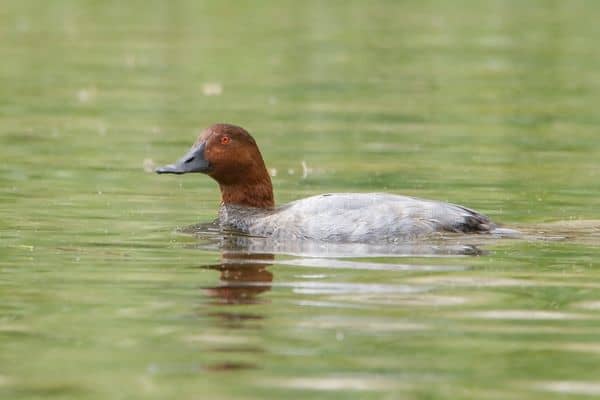
The Common Pochard is a medium-sized diving duck known for its distinctive appearance. The male Common Pochard has a rich chestnut-red head and neck, contrasting with a black breast and back.
Its sides are grayish-white, and its bill is blue with a black tip. The female Common Pochard has a more subdued appearance, with a brownish-gray body, a lighter face, and a darker bill.
Both sexes have bright red eyes. In terms of size, the Common Pochard typically measures around 17-21 inches (43-53 cm) in length.
Diet
The diet of the Common Pochard primarily consists of aquatic vegetation, such as submerged plants, pondweeds, and water milfoil. They also feed on a variety of invertebrates, including insects, crustaceans, and mollusks.
Common Pochards are skilled divers, capable of diving to considerable depths to reach their food sources. They use their specialized bills to filter out small invertebrates and plant matter from the water, while their serrated bills help them grasp and consume larger prey. This diverse diet allows Common Pochards to adapt to different habitats and find food throughout the year.
Nesting
The Common Pochard typically nests near water bodies, such as lakes, marshes, or ponds. The female Common Pochard builds her nest on the ground, hidden among dense vegetation or in grassy areas near the water’s edge.
She constructs the nest using plant materials like grass, reeds, and leaves, lining it with down feathers for insulation and comfort. Once the nest is prepared, the female lays a clutch of 6 to 12 eggs, which are usually creamy white in color.
She incubates the eggs for about 25 to 29 days, diligently keeping them warm until they hatch. During this period, the male Common Pochard remains nearby, guarding the nest and providing protection against potential threats.
After hatching, the female leads the ducklings to the water, where they can swim and forage for food. The young Common Pochards are precocial, meaning they are capable of feeding and moving independently shortly after hatching.
However, they still rely on their parents for protection and guidance until they become more self-sufficient. The nesting behavior of the Common Pochard showcases the species’ adaptation to nesting on the ground and their reliance on wetland habitats for successful reproduction.
Behavior

The Common Pochard exhibits various interesting behaviors. These diving ducks are known for their ability to swim and dive underwater in search of food. They use their specialized bills to filter and capture prey from the water, displaying impressive diving skills as they submerge themselves to considerable depths.
During the breeding season, Common Pochard males engage in courtship displays to attract females. These displays often involve head-bobbing, neck stretching, and rapid swimming to showcase their vibrant plumage. Males also emit unique vocalizations to communicate with females and establish their territories.
Common Pochards are social birds and can be found in flocks, particularly during migration and wintering periods. They often gather in large groups, interacting and foraging together. However, during the breeding season, they form pair bonds and become more territorial, defending their nesting sites and mating territories.
In terms of flight, Common Pochards have strong and rapid wingbeats. They can take off quickly from the water’s surface and fly swiftly, often in V-shaped formations during migration. Their wings produce a distinct whistling sound in flight.
While primarily aquatic, Common Pochards are capable of walking on land using their webbed feet. They may occasionally be observed grazing on grassy areas near the water’s edge.
Habitat
The Common Pochard is a waterfowl species that thrives in a range of freshwater habitats. They can be found in diverse environments such as lakes, ponds, reservoirs, marshes, and slow-moving rivers. With their wide distribution across Europe, Asia, and northern Africa, Common Pochards have adapted to different regions and climates.
These ducks are attracted to habitats with abundant vegetation, both emergent and submerged. Wetlands with dense reeds, grasses, and aquatic plants provide ideal cover, nesting sites, and food sources for the Common Pochard. They are well-suited to various water depths, equally comfortable in shallow or deeper waters.
During the breeding season, Common Pochards seek out secluded areas near the water’s edge to construct their nests among the vegetation. Outside of the breeding season, they often gather in larger flocks and utilize open water areas for feeding and resting.
While their primary habitat is freshwater ecosystems, Common Pochards can also adapt to brackish water habitats, such as coastal lagoons or estuaries, especially during migration or wintering periods. The Common Pochard’s habitat preference demonstrates their reliance on diverse wetland environments for breeding, foraging, and survival. Their adaptability to different water bodies contributes to their widespread distribution.
Range
According to the Hawaii Bird Project, the Common Pochard is a non-breeding visitor to Hawaii and is considered a vagrant species. The bird has been spotted on several of the islands, including the northwestern Hawaiian island of Midway.
However, sightings are infrequent and unpredictable, with the majority occurring during the winter months. It is believed that these birds are individuals that have strayed from their normal range and are not established residents of the islands.
Conservation Status
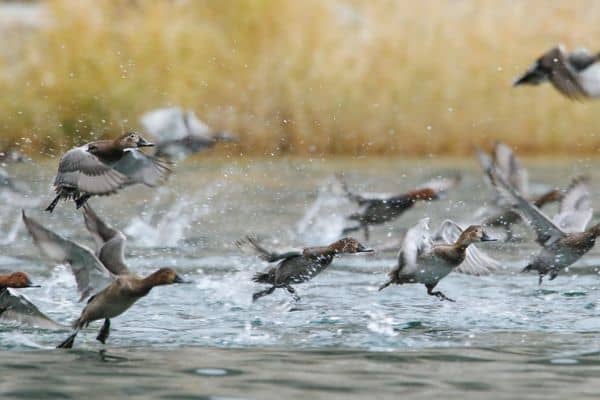
The conservation status of the Common Pochard is a matter of concern. The species is currently classified as “Vulnerable” on the International Union for Conservation of Nature (IUCN) Red List. This designation indicates that the population of Common Pochards has experienced a significant decline or faces threats that put them at risk of extinction.
Several factors contribute to the declining population of Common Pochards. Loss and degradation of wetland habitats, including the draining of wetlands for agriculture and development, have led to the loss of suitable breeding and foraging grounds. Pollution, such as water contamination with pesticides and industrial pollutants, poses further risks to their survival.
Interesting Facts
1. They have a distinctive Appearance
Male Common Pochards have eye-catching chestnut-red heads and necks, contrasting with a black breast and back, while females have more subdued brownish-gray plumage.
2. Migratory Birds
Common Pochards are migratory birds, traveling long distances between breeding and wintering grounds. They undertake impressive journeys to find suitable habitats and food sources.
3. Precocial Ducklings
Common Pochard ducklings are precocial, meaning they are capable of feeding and moving independently shortly after hatching. However, they still rely on their parents for protection and guidance.
4. Synchronized Courtship Displays
During courtship displays, groups of male Common Pochards often synchronize their movements, creating visually stunning spectacles as they swim together.
Frequently Asked Questions
1. Are Common Pochards social birds?
Yes, Common Pochards are social birds, especially outside of the breeding season. They often gather in large flocks, providing protection and increased foraging efficiency.
2. How do Common Pochards communicate?
Common Pochards communicate through a combination of vocalizations and visual displays. Males emit unique vocalizations, including whistles and grunts, during courtship displays to attract females.
3. Do Common Pochards dive underwater?
Yes, Common Pochards are skilled divers. They dive underwater to search for food, using their specialized bills to filter and capture prey.
4. How long do Common Pochards live?
Common Pochards have an average lifespan of around 10 to 15 years. However, some individuals have been known to live up to 20 years or more in favorable conditions.
